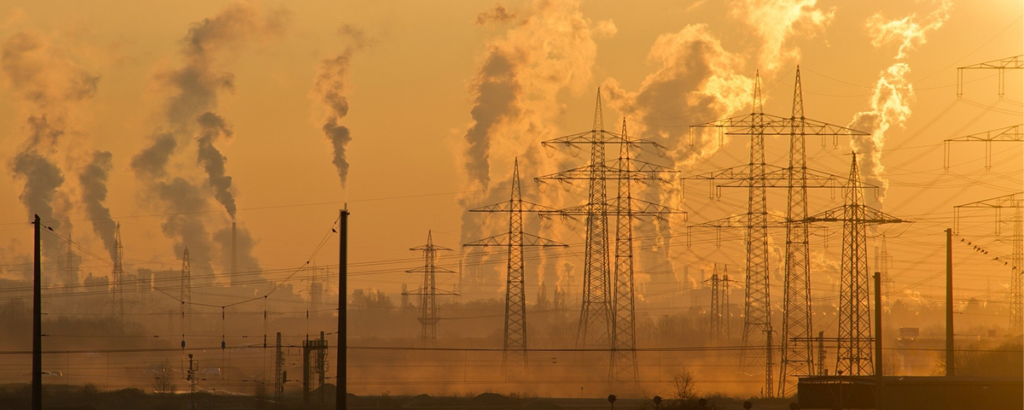Global Carbon Market Highlights: Q3 2021
By Eron Bloomgarden, Partner at Climate Finance Partners

Carbon prices continued to surge to record highs on the back of rising coal and natural gas prices, increasing participation by financial investors, and bullish outlook on climate policy.
Q3 2021 global carbon market highlights:
- Prices for the benchmark December 2021 European Union Allowance (EUA) contract rose to an all-time record of €65.77 ($76) at the end of September amid a surge of utility and investor buying.
- California Cap-and-Trade (CCA) prices have risen amid increasing gas-fired power generation and strong growth in fuels demand.
- Regional Greenhouse Gas Initiative (RGGI) prices rose above $10.00/short ton for the first time driven largely from increased demand from coal generation as high natural gas prices render coal more competitive.
- China completed the first months of operations of its national carbon market with officials reporting that the market is ‘operating smoothly’. The UK also completed its first months of trading in its Emissions Trading System (UK ETS) following its separation from the European ETS resulting from Brexit.
- Attention turns to Glasgow in November where the UK will host the annual UN climate negotiation. On top of the agenda is Article 6 of the Paris Agreement, which involves the rules on how countries can reduce their emissions using international carbon markets
Update on KRBN’s Carbon Market Exposure:
European Union’s Emissions Trading system (EU ETS)
European prices rose to set a new record above €65/ton ($75) in September, tracking soaring natural gas prices which themselves more than doubled in the last three months.
For the last 18 months natural gas-fired electricity has been more profitable than coal-fired power, thanks to a rising price of carbon. The EU ETS is designed to increase the costs of carbon-intensive energy and industry and encourage a shift to clean alternatives like wind and solar.
European natural gas storages ended last winter at low levels, and suppliers struggled to refill depleted stocks. Delays to the completion of the Nord Stream 2 pipeline that will bring additional gas to Germany from Russia combined with reduced flows of gas to Europe from Ukraine tightened the EU market.
Natural gas prices rose steadily through the first half of the year, but as the traditional restocking season reached its peak in July they started to increase much more rapidly.
In order to keep gas-fired electricity generation more profitable than coal, carbon prices started to rise quickly, breaking through the €60 ($69) barrier at the end of August, and within a week the market had breached €63 ( $72).
However, it became evident to traders and analysts that in order for gas storages to be refilled before the coming winter, gas needed to price itself out of power generation, and this required carbon prices to stop rising.
Commitment of Traders data from the ICE Endex exchange show that investment funds held net long positions of more than 54 million EUAs as of September 17, compared to a net long 41 million at the start of the year.
Commercial entities, which may include trading arms of some utilities as well as commodity trading firms, held a net long position of 501 million EUAs compared to 470 million on January 8.
Compliance entities such as power plants and industrial facilities held 85 million EUAs in long positions in September, compared to a total of 60 million at the start of April. (Many compliance buyers take delivery of futures in March, just ahead of the annual compliance deadline, and then start to build new positions.)
Even as EUA prices stagnated in August and September at around €60 ($69), front-month Title Transfer Facility (TTF) natural gas went on to record an increase of 187% for the year-to-date, reaching a peak of €75.50/MWh on September 20.
With coal-fired electricity now priced in for the coming winter, there remains some fundamental support for carbon. Coal plants that are now being brought back online are unlikely to have been fully hedged, so plant operators will be securing the required fuel and carbon for the coming season.
Analyst Bjarne Schieldrop of SEB estimates that a carbon price of €60 would bring natural gas back to the top of the power merit order by April next year.
In addition to demand from coal-fired power, the market is likely to see volatility stemming from political discussion over the EU’s “Fit for 55” package, which includes the full raft of proposed amendments to the EU ETS.
These include extending the market stability reserve’s 24% withdrawal rate, making a one-off adjustment to the market cap and altering the linear reduction factor – the annual reduction in the total number of allowances made available to the market.
Lawmakers will also debate the extension of the EU ETS to cover emissions from maritime shipping, and the extension of the existing coverage of intra-EU aviation past 2024.
The European Parliament is expected to start its consideration of the proposals for the Fit for 55 package in the coming weeks, and it is likely that the market will react to statements from lawmakers and committees as it has on many previous occasions. The whole legislative process is expected to take up to two years, with member state governments more involved in the final stages.
California Cap-and-Trade (CCA)
The California Carbon Allowance (CCA) market set a new price record of $27.50/ton in September, in line with gains in the European market. Market players have suggested that the bullish sentiment in the EU ETS is filtering through to US markets, as more investors look to build exposure to the energy transition and climate action by buying carbon.
The market’s August auction was a sell-out for the fourth consecutive time. The sale cleared at $23.30/ton, the highest price to date and the largest-ever premium to the reserve price ($17.71 this year).
The auction was also notable for having the largest-ever share of non-compliance buyers: according to state government data, 32.5% of the current-year CCAs on offer were purchased by investors and traders.
The final sale of the year will take place on November 17, at which the Air Resources Board will offer 68 million current year CCAs and 8.3 million advance allowances.
Prices also got a lift after the mid-September recall election failed to unseat Democrat governor Gavin Newsom. There had been concerns that a result in favor of unseating the sitting governor may have led to significant changes in the state’s climate policy, but prices bounced higher and traders began to target levels of $30/ton.
Emissions from power generation rose over the summer as the state sweltered under record temperatures and hydroelectric power generation sagged. Increased demand for transport fuels also boosted demand for CCAs.
Regional Greenhouse Gas Initiative (RGGI)
RGGI prices rose above $10.00/short ton in September for the first time ever, after the quarterly auction cleared at $9.70/st earlier in the month.
The northeastern US market had been driving higher on the back of speculative buyers, as well as rising natural gas prices in the US raising the prospect of more coal being used to generate power over the winter.
In the September auction, compliance entities bought just half the allowances on offer, and ICE data showed that investors held more than 76 million RGGI allowances compared to 71 million held by compliance buyers.
The administration of the ten-state market has begun consultations on how to adjust the market cap and whether to amend any of the parameters of the market when the next trading period begins in 2025.
Negotiations are still underway in the state of Pennsylvania over whether the state will join the regional market next year. There has been considerable Republican opposition within the state legislature to executive proposals to sign up to RGGI, and it’s not yet clear whether these obstacles can be cleared in time for a hoped-for 2022 start.
DISCLAIMER: The views expressed represent the opinion of Climate Finance Partners, LLC (“CLIFI”), which are subject to change and are not intended as a forecast of future results or investment advice. Stated information is derived from proprietary and non-proprietary sources which have not been independently verified for accuracy or completeness. While CLIFl believes the information to be accurate and reliable, we do not claim or have responsibility for its completeness, accuracy, or reliability. Statements of future expectations, estimates, projections, and other forward-looking statements are based on available information and management’s view as of the time of these statements. Accordingly, such statements are inherently speculative as they are based on assumptions which may involve known and unknown risks and uncertainties. Actual results, performance or events may differ materially from those expressed or implied in such statements. The information contained in this report and any attached documents may be confidential or legally privileged. Any unauthorized review, use, disclosure, dissemination, distribution, or copying of this communication or any attached documents, is strictly prohibited. Any information relating to the Kraneshares Global Carbon ETF, including historical performance, month-end performance, and full and summary prospectus, can be found at the Fund’s website. www.kraneshares.com, under the ‘Products’ section. Read the prospectus carefully before investing. The Kraneshares Global Carbon ETF is distributed by SEI Investments Distribution Company (SIDCO), which is not affiliated with the Investment Adviser or Sub-Adviser for the Fund.










